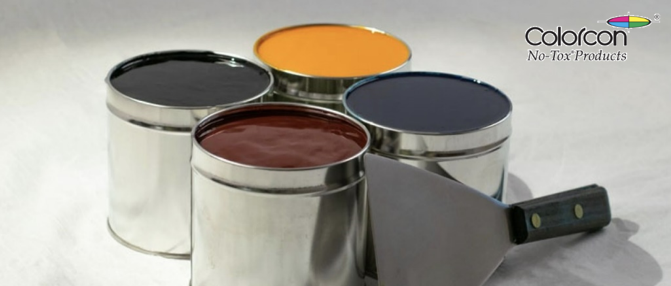But before the shop preassembles them they’re nested together and stacked up on a shelf, so the inside of your pizza box is in contact with the printed outside of another box. So yes - it’s likely that your extra-cheese double-pepperoni meat lover’s deluxe comes in direct contact with inks and coatings. Yum. Sounds appetizing, right?
A New Tint on Food Packaging Regulations
As you know, food packaging is regulated by food safety agencies (e.g., the US FDA). Packaging standards are critical since packaging is designed to keep food fresh and free of contaminants from the time it’s produced and leaves the store or restaurant to the time it arrives on your plate. Packaging also needs to comply with current health standards.
Nested boxes are one of the most common types of food packaging for several reasons:
- They easily take a printed design and text for the purpose of product identification and marketing.
- They allow brands to fulfill marketing strategies at relatively low cost and with high visual impact.
- Consumers often appreciate they’re made of biodegradable materials - a point that is increasingly important as consumers grow more eco-conscious in their purchasing choices.
Printing ink isn’t just used on nested boxes. It’s often included on clamshell food packaging (the type with burgers or sandwiches) as well as wrappers for items such as ice cream cones. In all cases, food manufacturers are risking that their printed logos and designs are doing more than communicating a marketing strategy: they’re finding their way into the food customers eat.
communicating a marketing strategy: they’re finding their way into the food customers eat.
Is Printing Ink a “Food Additive”?
Before we discuss this issue, it’s worthwhile to look at some definitions. The U.S. FDA defines color additives as, “dye, pigment or other substance which is capable of imparting color when added or applied to a food, drug, cosmetic or to the human body.” Food additives are defined by the same agency as “…any substance the intended use of which results or may reasonably be expected to result, directly or indirectly, in its becoming a component of, or otherwise affecting the characteristic of any food including any substance intended for use in…packing…packaging…or holding food….”
Since we know for certain that many printing inks and coatings come into contact with food – particularly in the case of nested boxes, printed wrappers or clamshell containers – this essentially makes them food additives, which are subject to regulation by the FDA. Food additives come in two “flavors,” so to speak: direct additives and indirect additives.
Direct Versus Indirect Additives
Direct additives are those substances that are intended to be ingested in food products. These additives might include flavoring agents, coloring, anti-caking substances, preservatives or thickeners and gums added to improve texture.
Indirect additives are those substances that are commonly used in the processing, packaging, holding and transportation of food. Indirect additives have no functional purpose in the preparation of food but are likely to come in contact with the edible item. Print ink and coatings may be included in the definition of indirect additives as food bags, cartons or boxes can be reasonably expected to come into contact with food.
When companies use non-food-grade ink for their packaging, they may decide to use a coating to protect the food from it. This begs the question: is the coating safe to come into contact with food? Even if the coating safely contains the colors and ink, what happens when the box is torn or perforated? How do you detect pinholes in the coating, to ensure nonfood-grade inks don’t come in contact with food?
Using the example of nested pizza boxes in which the ink side contacts the interior side of the box stacked above it, there is the potential that ink will come into contact with the pizza that will be added to the box once it is made in the pizza shop.
A Safer Alternative to Non-Food-Grade Inks and Colors
Colorcon inks are made from indirect and direct food additives that are approved by the FDA, so they are safe alternatives to conventional inks and do not require a barrier coating. Formulated for direct food and confectionery printing, these inks can be used to identify and personalize products safely with a wide variety of colors in water and solvent-based systems. Best of all – no special coatings are needed.
Our No-Tox products are also ideal for the printing of medical devices and pharmaceutical products. From the selection of only FDA- and/or EU-compliant raw materials, to our ISO 9001-2015 certified manufacturing facility to the use of FDA-compliant packaging containers and liners, we offer our customers the pinnacle of safety and experience for their direct food contact projects.
Colorcon has more than 50 years of experience in creating FDA- and EU-compliant ink design and colors that adhere to food safety standards for both direct and indirect food contact. Colorcon’s No-Tox line of products for packaging printing can be used for a variety of printing methods, including offset, water-based flexographic, solvent based flexographic, water-based gravure, solvent based gravure, heat wet web and web no heat.

Don Grieco is the Business Development Manager for the Colorcon No-Tox Products Division. He manages accounts in Mexico, Asia, and the northern region of the US. Since joining Colorcon in 2003, Don has held several customer-facing roles including Inside Sales and Manager of the No-Tox Customer Service group. He is a go-to resource for customers seeking guidance on direct contact compliant inks and coatings in the food, medical and pharmaceutical industries.